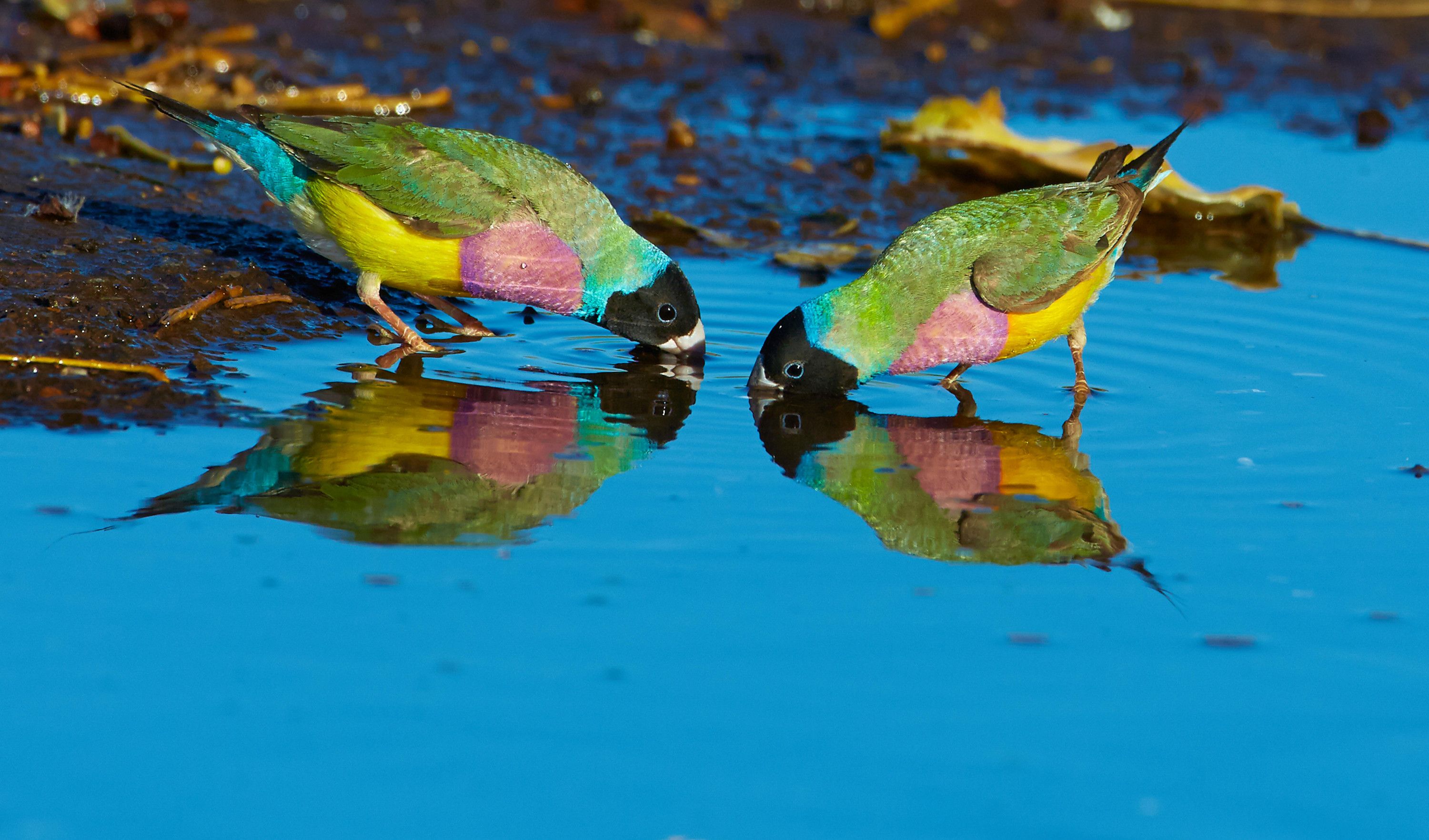

For instance picking dandelion leaves from the roadside is not a good idea. Make sure you get any greens from a non-polluted area. In addition, zebra finches like many greens, such as dandelion leaves and chickweed. If they are too fat, then they need more exercise, not less food. It's important, that zebra finches always have access to food. This should be made up of different kinds of millet and canary seed as well as other seeds. Healthy birds can be expected to reach approximately 7-8 years of age.The zebra finch diet consists of a seed mixture for small birds. A strict worming and parasite control regime should be implemented to ensure their long-term health.

Healthīlack-throated finch’s diet is high in live food, making them especially vulnerable to parasite infection. Readily available mutations include pied, fawn, cream and white. MutationsĪ small number of colour mutations have been established. The male’s head is slightly broader than the female’s, and has a light grey colouration compared to the female’s darker brownish/grey colouration. Young birds can generally be left with their parents without issue, however aggression issues are not unheard of and should be watched for closely. Young birds fledge the nest at three weeks of age and are usually independent a month later. They typically lay 4-6 eggs in each clutch, which are incubated by both parents for approximately 14 days. Avoid nest inspections unless absolutely necessary, and wait for young chicks to fledge before attempting to attach leg rings. They will construct a dome-shaped nest from fine strands of dry grass. Pairs may protect their nest and the surrounding area quite fiercely, so don’t attempt to house in a colony or mixed collection unless the aviary is sufficiently large.Ī wide variety of artificial nests will be accepted, however they prefer dense brush a few meters above the ground. The least dominant pairs may not breed at all. In a colony situation, a dominant pair will generally emerge and experience superior breeding results. Photo credit: Eric Vanderduys Breedingīlack-throated finches breed best in spring and autumn, with a hen bird that is at least 12 months of age. Commercial soft foods-such as egg and biscuit mix-are especially loved by black-throated finches.ĭo not feed anything from the list of forbidden foods. Small mealworms, maggots, and termites are most frequently given. Live food will be consumed during the breeding season. Spinach can also be given, but only sparingly as it can contribute to calcium deficiency. Leafy greens such as kale, bok choy, endive and silverbeet are in important part of the black-throated finch’s diet. Freshly grown green seed heads should also be offered frequently. Sprouted seed increases the nutritional value of seed and is a cheap way to improve your birds health. Seed lacks many essential vitamins and minerals which must be compensated for by introducing other foods. Diet & FeedingĪ quality seed mix including canary seed, various millets and panicum forms the basis of the black-throated finch’s diet. They can be successfully housed with most placid finches, quail, doves, and (space permitting) Neophema parrots. These species must be housed separately.īlack-throated finches are generally very placid in a mixed aviary situation. Some breeders find they perform better when housed in small groups of 2-3 pairs.īlack-throated finches will interbreed with other birds in the Poephila genus (Long-tailed finches and Masked finches) and produce worthless hybrids. They prefer a large planted aviary, but are generally tolerant of smaller aviaries or even a large flight cage. Black-throated finch by Dominic Sherony Housing & Compatibilityīlack-throated finches can be housed successfully as single pairs, a colony, or as part of a mixed collection.
FINCH RESCUE BIRDS LICENSE
Due to its endangered status in the wild, a license or permit is required to keep this species in an aviary in many states. The black-throated finch is well established in aviculture. The species is endangered predominantly due to human development, most notably Adani’s Carmichael coal mine, which is currently being constructed on some of the last suitable black-throated finch habitat. They are only found in the grassy woodlands of north-eastern Australia, having gone extinct in New South Wales. The black-rumped subspecies is colloquially known as the diggle. The black-throated finch is known by a lot of different names, including the parson finch, black-rumped grassfinch, or black throat.


 0 kommentar(er)
0 kommentar(er)
